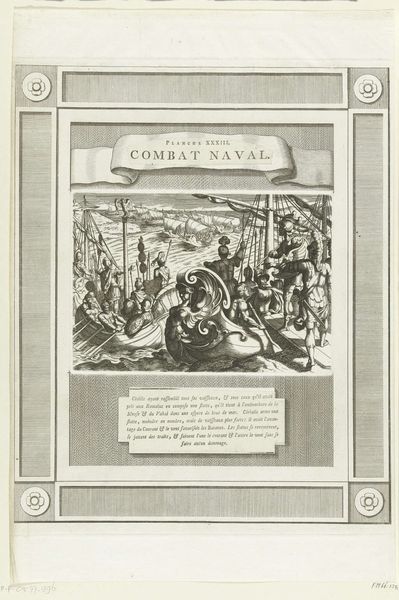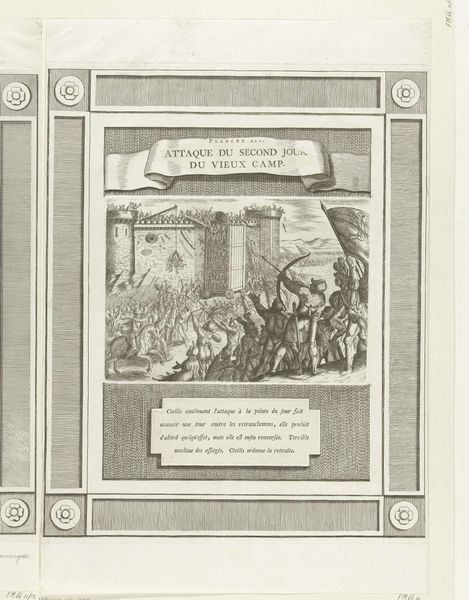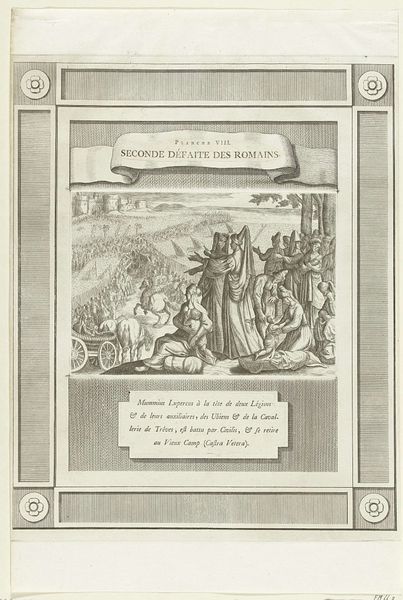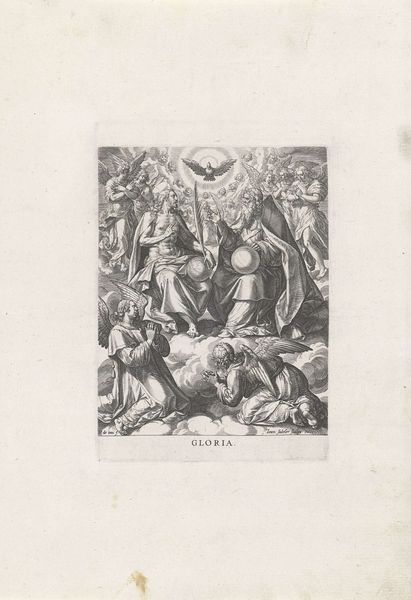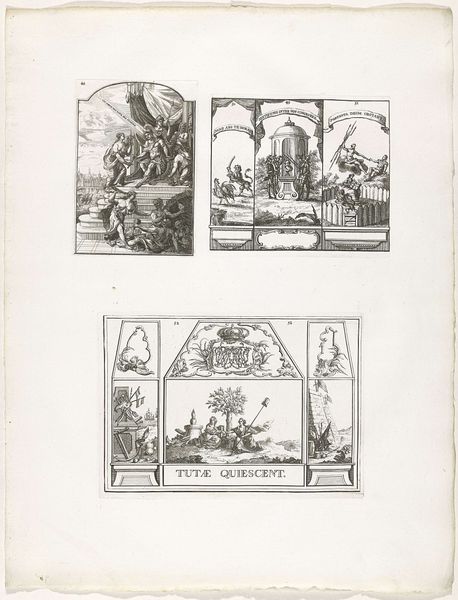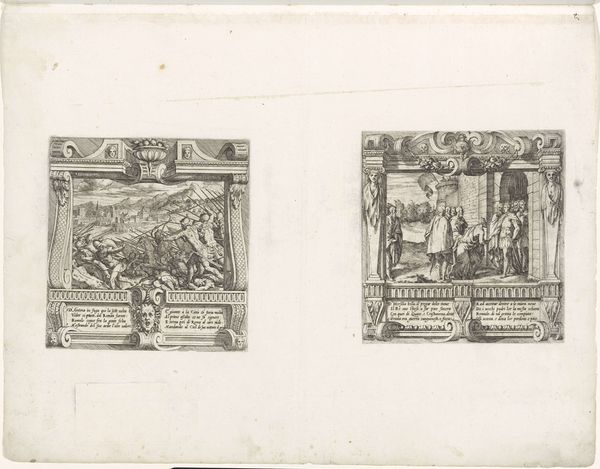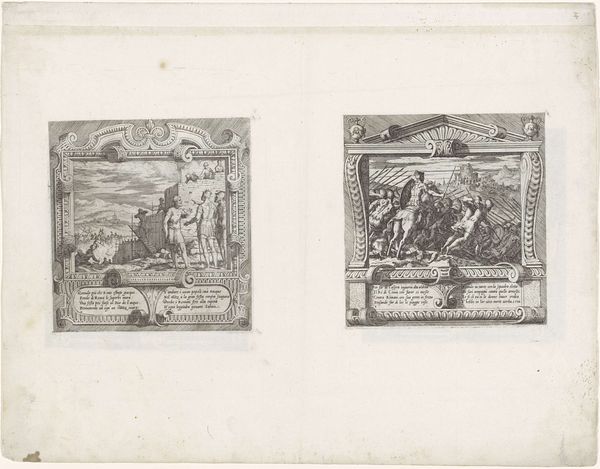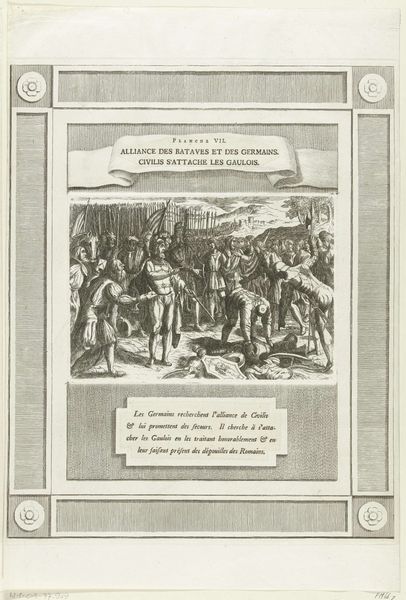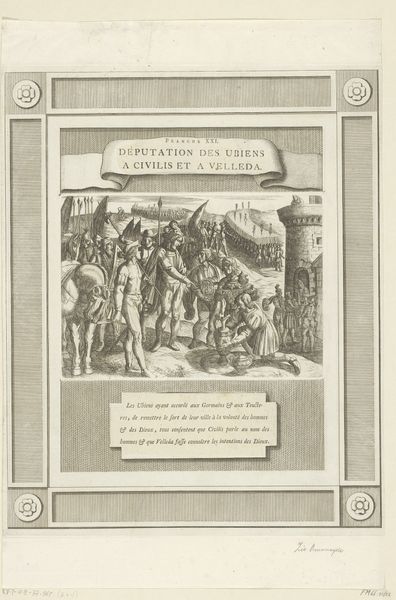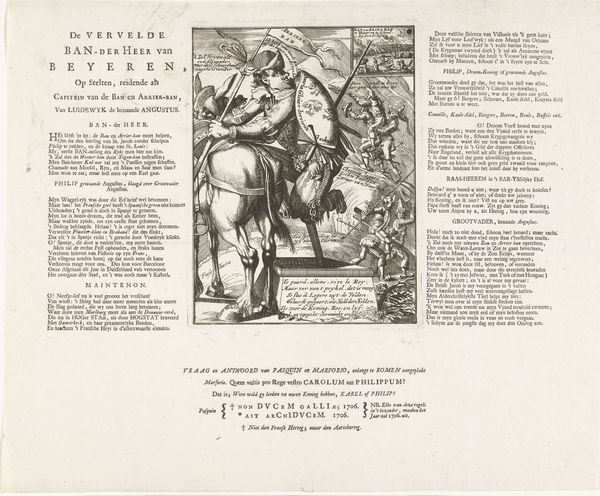
Dimensions: height 140 mm, width 202 mm, height 370 mm, width 300 mm
Copyright: Rijks Museum: Open Domain
Editor: This engraving, titled "Civilis wordt gedwongen zwemmend te vluchten, 69-70," was created around 1768-1770 by an anonymous artist. It's currently housed in the Rijksmuseum. It's quite a busy image! I'm immediately struck by the chaos depicted – a sense of flight and desperation. What strikes you when you look at this work? Curator: Considering its context, this "chaos" is strategically depicted. It’s part of a much larger conversation about Dutch national identity, particularly their struggle against Roman oppression. Engravings like these served a very public role. How do you think images such as this might contribute to shaping a shared identity or national narrative? Editor: It almost seems like propaganda – meant to inspire resistance and pride in their history. But how accurate were these portrayals, historically speaking? Did the artist have to worry about factual representation? Curator: Accuracy wasn't necessarily the primary concern. The point was to create compelling images that reinforced the desired message: Dutch resilience, Roman cruelty. Visual language, the symbolism employed, and the targeted audience take precedence in baroque art. Note the figures prominently fleeing via water; what feeling do you associate with this central element? Editor: Danger, vulnerability… I see what you mean. It's about creating a visceral emotional response. I guess I often forget that art wasn't always "art for art's sake," but served a more overtly political purpose. Curator: Exactly! And understanding that function allows us to interpret the image far beyond just aesthetic preferences. Consider how museums display and frame artwork such as this in current socio-political conversations. Editor: That gives me a lot to consider as I continue learning. It shifts my perspective completely, knowing its history is tied up with Dutch nation-building. Curator: Precisely, and looking through a more historical lens offers rich, diverse learning perspectives for artwork interpretations.
Comments
No comments
Be the first to comment and join the conversation on the ultimate creative platform.
